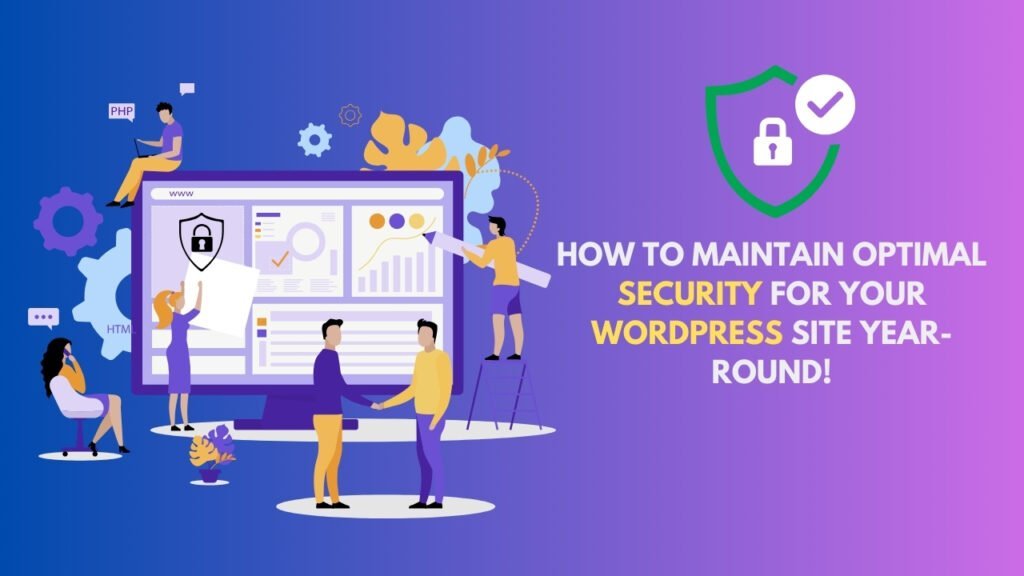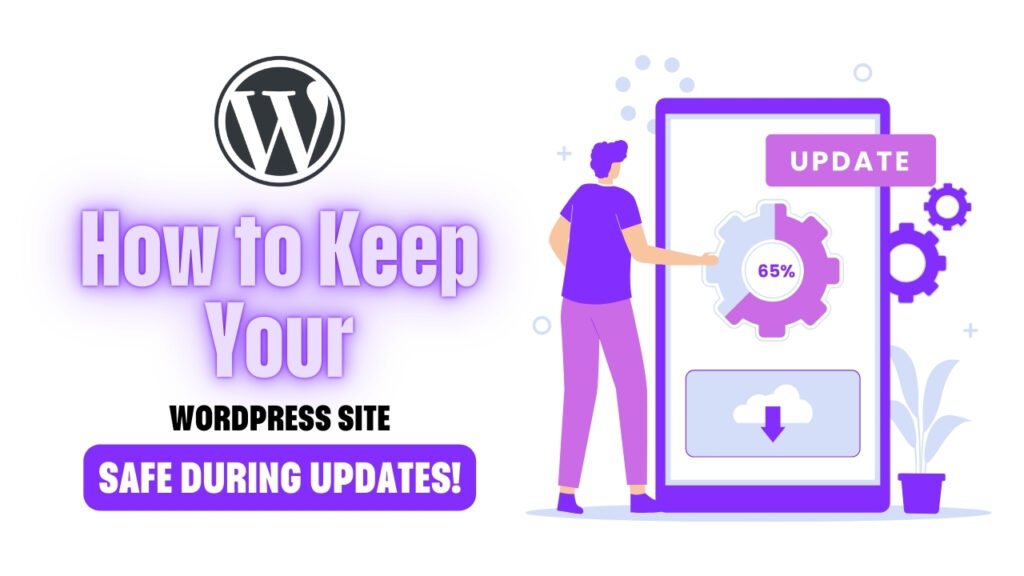Website security is a critical aspect of maintaining an online presence in today’s digital landscape. With the increasing prevalence of cyber threats, ensuring the security of your website is paramount. This article will delve into why website security should be your top priority in 2024, covering various facets such as common cyber threats, best practices, and the implications of inadequate security measures.
The Rising Threat Landscape in 2024
In 2024, the digital threat landscape continues to evolve at an alarming rate. Cybercriminals are becoming more sophisticated, leveraging advanced technologies like artificial intelligence and machine learning to orchestrate their attacks. This has resulted in an increased frequency and severity of cyber incidents, making website security more crucial than ever. The growing interconnectivity of devices and systems, along with the expansion of the Internet of Things (IoT), has broadened the attack surface, providing cybercriminals with more opportunities to exploit vulnerabilities. Businesses, regardless of size, must be proactive in securing their digital assets to mitigate the risk of cyber threats.
The financial implications of cyberattacks are staggering. According to recent studies, the average cost of a data breach in 2024 is projected to exceed $4 million, encompassing direct financial losses, reputational damage, and regulatory fines. Furthermore, the introduction of stringent data protection regulations globally, such as the General Data Protection Regulation (GDPR) and the California Consumer Privacy Act (CCPA), imposes hefty penalties on organizations that fail to safeguard personal data. This regulatory landscape underscores the necessity for robust website security measures to ensure compliance and protect sensitive information.
Phishing attacks, ransomware, and distributed denial-of-service (DDoS) attacks are among the most prevalent threats in 2024. Phishing attacks have become increasingly sophisticated, using social engineering tactics to deceive users into divulging confidential information. Ransomware attacks, where cybercriminals encrypt an organization’s data and demand a ransom for its release, have also surged, causing significant operational disruptions. DDoS attacks, aimed at overwhelming a website with traffic to render it unavailable, can cripple online businesses, leading to lost revenue and customer trust.
Types of Cyber Threats Facing Websites

Websites will face a myriad of cyber threats in 2024, each with unique characteristics and potential impacts. Understanding these threats is the first step in developing an effective security strategy. Common cyber threats include malware, SQL injection attacks, cross-site scripting (XSS), and man-in-the-middle (MITM) attacks.
Malware, or malicious software, encompasses a variety of harmful programs such as viruses, worms, trojans, and spyware. These programs can infiltrate a website through vulnerabilities in software, plugins, or themes, leading to data theft, unauthorized access, and other malicious activities. SQL injection attacks involve injecting malicious SQL code into a website’s database query, enabling attackers to manipulate the database and access sensitive information. This type of attack is particularly dangerous for websites that rely heavily on databases, such as e-commerce platforms and content management systems.
Cross-site scripting (XSS) attacks exploit vulnerabilities in web applications by injecting malicious scripts into webpages viewed by users. These scripts can steal cookies, session tokens, or other sensitive information, posing a significant threat to user data and privacy. Man-in-the-middle (MITM) attacks occur when an attacker intercepts and alters the communication between a user and a website, allowing them to eavesdrop on or manipulate the transmitted data. This type of attack is particularly concerning for websites that handle sensitive information, such as online banking platforms and e-commerce sites.
Impacts of Cyber Attacks on Businesses
The repercussions of cyber attacks on businesses are far-reaching and multifaceted. Beyond the immediate financial losses, cyber incidents can cause substantial reputational damage. When customers lose trust in a company’s ability to protect their data, it can lead to a significant decline in customer retention and acquisition. The negative publicity surrounding a cyber attack can also deter potential clients and partners, affecting the overall business growth.
Operational disruptions are another critical impact of cyber attacks. Ransomware attacks, for example, can paralyze business operations by encrypting critical data and demanding a ransom for its release. This not only halts productivity but also incurs additional costs related to restoring systems and data. Similarly, DDoS attacks can disrupt online services, leading to downtime and lost revenue, especially for businesses that rely heavily on their online presence.
Legal and regulatory consequences are also significant. Non-compliance with data protection regulations such as GDPR and CCPA can result in hefty fines and legal actions. These regulations mandate organizations to implement robust security measures to protect personal data and report any data breaches promptly. Failure to comply can lead to severe financial penalties and legal liabilities, further exacerbating the financial strain on the affected business.
Importance of SSL Certificates

SSL (Secure Socket Layer) certificates are a fundamental component of website security. They encrypt the data transmitted between a user’s browser and the web server, ensuring that sensitive information, such as login credentials and payment details, is protected from interception by malicious actors. In 2024, the importance of SSL certificates cannot be overstated, as they provide a critical layer of security for websites.
Beyond the security benefits, SSL certificates also play a crucial role in building trust with users. Websites with SSL certificates display a padlock icon in the browser’s address bar, indicating to users that their connection is secure. This visual cue is essential for establishing trust, particularly for e-commerce websites and online services that handle sensitive information. Furthermore, search engines like Google prioritize secure websites in their search rankings, making SSL certificates a vital component of SEO strategies.
Implementing SSL certificates is a straightforward process. Website owners can obtain SSL certificates from trusted certificate authorities (CAs) and install them on their web servers. There are different types of SSL certificates available, including domain-validated (DV), organization-validated (OV), and extended-validation (EV) certificates, each offering varying levels of validation and trust. Regardless of the type, having an SSL certificate is essential for ensuring a secure and trustworthy online presence.
Role of Firewalls in Website Security
Firewalls are a critical line of defense in website security, acting as a barrier between a trusted internal network and untrusted external networks. They monitor and control incoming and outgoing network traffic based on predetermined security rules, blocking potentially harmful traffic while allowing legitimate communications to pass through. In 2024, the role of firewalls in safeguarding websites has become increasingly significant due to the sophisticated nature of cyber threats.
There are different types of firewalls available, including network firewalls, web application firewalls (WAFs), and cloud-based firewalls. Network firewalls protect the entire network by filtering traffic at the perimeter, while WAFs specifically protect web applications by filtering and monitoring HTTP/HTTPS traffic. Cloud-based firewalls offer scalable security solutions, leveraging the cloud to provide protection against a wide range of threats.
Implementing firewalls involves configuring them to align with the website’s security requirements. This includes defining rules to block malicious traffic, setting up intrusion detection and prevention systems (IDPS), and regularly updating firewall policies to address emerging threats. By effectively deploying firewalls, website owners can significantly reduce the risk of cyber attacks and ensure a secure online environment.
Significance of Regular Security Audits

Regular security audits are essential for maintaining the integrity and security of websites. These audits involve systematically evaluating a website’s security measures to identify vulnerabilities and assess the effectiveness of existing controls. In 2024, conducting regular security audits is crucial for staying ahead of evolving cyber threats and ensuring that security practices remain robust and up-to-date.
Security audits encompass various activities, including vulnerability scanning, penetration testing, and reviewing access controls and configurations. Vulnerability scanning involves using automated tools to identify potential weaknesses in the website’s infrastructure, such as outdated software, misconfigurations, and known vulnerabilities. Penetration testing, on the other hand, involves simulating real-world attacks to test the website’s defenses and identify exploitable vulnerabilities.
In addition to technical assessments, security audits also involve reviewing policies and procedures related to security. This
includes evaluating incident response plans, employee training programs, and compliance with regulatory requirements. By conducting comprehensive security audits, website owners can identify and address security gaps, enhance their defenses, and ensure ongoing protection against cyber threats.
Implementing Strong Password Policies
Strong password policies are a fundamental aspect of website security. In 2024, enforcing robust password practices is critical for preventing unauthorized access to websites and protecting sensitive information. Weak passwords remain a significant vulnerability, with many cyber attacks exploiting this weakness to gain access to accounts and systems.
A strong password policy involves requiring users to create complex passwords that are difficult for attackers to guess or crack. This typically includes enforcing a minimum password length, incorporating a mix of uppercase and lowercase letters, numbers, and special characters, and avoiding easily guessable information such as common words or phrases. Additionally, encouraging users to use unique passwords for different accounts can further enhance security.
Implementing multi-factor authentication (MFA) is another effective measure to strengthen password security. MFA requires users to provide two or more forms of verification before gaining access, such as a password and a one-time code sent to their mobile device. This additional layer of security makes it significantly more challenging for attackers to compromise accounts, even if they manage to obtain the password.
Must Read: 10 Blogging Tips That Will Skyrocket Your Traffic Overnight!
Benefits of Using Security Plugins
Security plugins are invaluable tools for enhancing website security. These plugins offer a range of features designed to protect websites from various threats, including malware scanning, firewall protection, and login security. In 2024, the use of security plugins is highly recommended for website owners seeking to bolster their security measures without requiring extensive technical expertise.
One of the primary benefits of security plugins is their ability to automate security tasks. For example, plugins can regularly scan websites for malware and vulnerabilities, alerting owners to potential issues that need attention. Some plugins also include firewall capabilities, providing an additional layer of defense against malicious traffic. Additionally, login security features, such as limiting login attempts and implementing CAPTCHA challenges, can help prevent brute force attacks.
Popular security plugins for content management systems like WordPress include Wordfence, Sucuri, and iThemes Security. These plugins offer comprehensive security solutions, with features such as real-time threat detection, file integrity monitoring, and security hardening options. By leveraging security plugins, website owners can enhance their defenses and protect their websites from a wide range of cyber threats.
Two-Factor Authentication (2FA)
Two-factor authentication (2FA) is a highly effective security measure that adds an extra layer of protection to website accounts. In 2024, implementing 2FA is essential for safeguarding against unauthorized access and enhancing overall security. 2FA requires users to provide two forms of verification before gaining access to an account, typically a password and a one-time code sent to their mobile device or email.
The primary advantage of 2FA is that it significantly reduces the risk of account compromise. Even if an attacker manages to obtain the user’s password, they would still need the second factor to gain access. This makes it considerably more challenging for cybercriminals to breach accounts, providing an additional safeguard for sensitive information.
Implementing 2FA is relatively straightforward. Many websites and online services offer 2FA options, which users can enable through their account settings. Common methods of 2FA include SMS-based verification, authentication apps like Google Authenticator, and hardware tokens. Encouraging users to enable 2FA can greatly enhance the security of their accounts and protect against potential breaches.
Protecting Against DDoS Attacks
Distributed denial-of-service (DDoS) attacks are a significant threat to website availability and performance. In 2024, protecting against DDoS attacks is crucial for ensuring that websites remain accessible and functional. DDoS attacks involve overwhelming a website with a flood of traffic from multiple sources, rendering it unavailable to legitimate users.
To protect against DDoS attacks, website owners can implement various mitigation strategies. One effective approach is to use content delivery networks (CDNs) that distribute website traffic across multiple servers, reducing the impact of an attack on a single server. CDNs also provide additional bandwidth, helping to absorb the influx of traffic during an attack.
Another strategy is to use DDoS protection services, which monitor traffic and filter out malicious requests. These services can detect and mitigate DDoS attacks in real-time, ensuring that legitimate traffic can still access the website. Additionally, implementing rate limiting and traffic filtering rules can help prevent malicious traffic from overwhelming the website.
The Need for Regular Software Updates
Regular software updates are essential for maintaining website security. In 2024, keeping software up-to-date is critical for protecting against known vulnerabilities and ensuring that security patches are applied promptly. Outdated software can expose websites to a wide range of threats, as cybercriminals often target known vulnerabilities to gain access to systems.
Software updates typically include patches for security vulnerabilities, bug fixes, and performance improvements. This applies to all components of a website, including the content management system (CMS), plugins, themes, and server software. By regularly updating these components, website owners can ensure that their websites are protected against the latest threats.
Automating the update process can help ensure that updates are applied promptly. Many CMS platforms, such as WordPress, offer automatic update features that can be enabled through the settings. Additionally, using managed hosting services can provide an extra layer of security, as these services often include automatic updates and security monitoring.
Data Encryption Techniques
Data encryption is a critical aspect of website security, protecting sensitive information from unauthorized access. In 2024, implementing robust encryption techniques will be essential for ensuring the confidentiality and integrity of data. Encryption involves converting data into a coded format that can only be deciphered with the correct decryption key.
There are various encryption techniques available, each suited to different use cases. One common method is SSL/TLS encryption, which secures data transmitted between a user’s browser and the web server. This ensures that sensitive information, such as login credentials and payment details, is protected from interception by malicious actors.
Another important encryption technique is data-at-rest encryption, which protects data stored on servers and databases. This involves encrypting files and databases, ensuring that even if the data is accessed by unauthorized individuals, it remains unreadable without the decryption key. Implementing encryption at both the transport and storage levels is crucial for comprehensive data protection.
Educating Your Team on Security Best Practices
Educating your team on security best practices is a vital component of a comprehensive website security strategy. In 2024, human error remains one of the leading causes of security breaches, making it essential to ensure that all team members are aware of and adhere to security protocols. This includes providing regular training on the latest security threats, safe online practices, and the importance of following security policies.
Training should cover a range of topics, including recognizing phishing attempts, creating strong passwords, and the importance of keeping software updated. Additionally, team members should be educated on the proper handling of sensitive information, such as customer data and intellectual property. Regular security awareness training can help reinforce good security habits and reduce the risk of accidental security breaches.
Implementing a security policy that outlines the expected behaviors and procedures for maintaining security is also important. This policy should be communicated to all team members, regularly reviewed, and updated to address emerging threats. By fostering a culture of security awareness, organizations can significantly enhance their overall security posture.
Monitoring and Logging Website Activity
Monitoring and logging website activity are critical for detecting and responding to security incidents. In 2024, implementing robust monitoring and logging practices will be essential for maintaining a secure website. Monitoring involves continuously observing website activity to identify suspicious behavior, while logging involves recording detailed information about these activities for further analysis.
Monitoring tools can detect anomalies such as unusual login attempts, sudden spikes in traffic, and unauthorized changes to website content. By setting up alerts for these anomalies, website owners can quickly respond to potential security incidents and mitigate their impact. Logging provides a detailed record of website activity, which is invaluable for investigating security breaches and identifying the root cause of incidents.
Implementing comprehensive logging practices involves recording information such as user login attempts, file changes, and access to sensitive data. Logs should be stored securely and regularly reviewed to identify any patterns or trends that may indicate a security issue. By maintaining detailed logs and monitoring website activity, organizations can enhance their ability to detect, respond to, and recover from security incidents.
Backup and Disaster Recovery Plans
Backups and disaster recovery plans are essential components of a robust website security strategy. In 2024, ensuring that websites have reliable backup and recovery solutions in place is crucial for minimizing downtime and data loss in the event of a security incident. Backups involve creating copies of website data that can be restored in case of data loss or corruption.
Regularly scheduled backups are vital for ensuring that the most recent data is available for recovery. This includes backing up all website files, databases, and configurations. It is important to store backups in multiple locations, including offsite storage, to protect against physical damage or theft.
Disaster recovery plans outline the procedures for restoring website functionality following a security incident. This includes identifying critical systems and data, establishing recovery priorities, and defining roles and responsibilities for the recovery process. By having a well-documented disaster recovery plan, organizations can quickly restore their websites and minimize the impact of security incidents on their operations.
Handling Security Breaches
Handling security breaches effectively is crucial for minimizing damage and restoring normal operations. In 2024, having a well-defined incident response plan is essential for managing the aftermath of a security breach. This plan should outline the steps to take immediately following a breach, including identifying and containing the threat, assessing the impact, and communicating with affected parties.
The first step in handling a security breach is to identify and contain the threat. This involves isolating affected systems, terminating unauthorized access, and preventing the spread of the breach. Once the threat is contained, the next step is to assess the impact of the breach, including the extent of data loss or damage and the potential risks to affected individuals.
Effective communication is also critical during a security breach. Organizations should notify affected parties, such as customers and partners, about the breach and provide guidance on steps they can take to protect themselves. Additionally, regulatory bodies may need to be informed, depending on the nature and scope of the breach.
Must Read: 10 WP Plugins You Can’t Live Without – Ultimate Review!
Third-Party Security Services
Leveraging third-party security services can enhance website security by providing specialized expertise and resources. In 2024, using third-party services is an effective way to augment internal security measures and ensure comprehensive protection. These services offer a range of solutions, including managed security services, vulnerability assessments, and incident response support.
Managed security service providers (MSSPs) offer ongoing monitoring and management of security systems, allowing organizations to focus on their core business activities. MSSPs can provide services such as firewall management, intrusion detection, and security event monitoring, ensuring that potential threats are identified and addressed promptly.
Vulnerability assessments conducted by third-party providers can identify weaknesses in a website’s security posture, providing valuable insights for remediation. These assessments typically include penetration testing, security audits, and compliance evaluations. By leveraging third-party expertise, organizations can gain a deeper understanding of their security vulnerabilities and implement effective countermeasures.
Future Trends in Website Security
The future of website security in 2024 and beyond will be shaped by emerging technologies and evolving threats. Staying ahead of these trends is crucial for maintaining a secure online presence. One significant trend is the increasing use of artificial intelligence (AI) and machine learning (ML) in cybersecurity. These technologies can analyze vast amounts of data to identify patterns and anomalies, enhancing threat detection and response capabilities.
Another trend is the growing importance of zero-trust security models. This approach assumes that all network traffic, both internal and external, is potentially malicious and requires strict verification. Implementing zero-trust principles involves continuous monitoring, granular access controls, and robust authentication measures, providing a higher level of security.
The rise of quantum computing also presents both opportunities and challenges for website security. While quantum computing has the potential to break current encryption methods, it also offers new possibilities for developing more secure encryption techniques. Staying informed about these advancements and adapting security strategies accordingly will be essential for protecting websites in the future.
Case Studies of Major Security Breaches
Examining case studies of major security breaches can provide valuable insights into the consequences of inadequate security measures and the importance of proactive security strategies. In 2024, several high-profile breaches have highlighted the need for robust website security.
One notable case is the 2024 breach of a large e-commerce platform, where attackers exploited a vulnerability in the website’s software to access customer data. The breach resulted in the exposure of millions of customer records, leading to significant financial losses and reputational damage. This incident underscores the importance of regular security audits and prompt patching of vulnerabilities.
Another case involved a DDoS attack on a popular online service provider, which caused prolonged downtime and disrupted services for millions of users. The attack highlighted the need for effective DDoS mitigation strategies, such as using CDNs and DDoS protection services, to ensure website availability.
These case studies demonstrate the critical importance of implementing comprehensive security measures and staying vigilant against evolving threats. By learning from past breaches, organizations can enhance their security practices and better protect their websites.
Conclusion: Making Security a Priority
Ensuring robust website security is imperative in 2024, given the increasing prevalence and sophistication of cyber threats. By understanding the rising threat landscape, implementing best practices, and leveraging advanced security technologies, website owners can protect their digital assets and maintain a secure online presence. Prioritizing website security not only safeguards against financial losses and reputational damage but also ensures compliance with regulatory requirements and builds trust with users.
Investing in security measures such as SSL certificates, firewalls, regular security audits, strong password policies, and security plugins can significantly enhance a website’s defenses. Additionally, implementing two-factor authentication, protecting against DDoS attacks, and ensuring regular software updates are crucial for maintaining security. Educating your team, monitoring website activity, and having backup and disaster recovery plans in place further strengthen your security posture.
By staying informed about future trends and leveraging third-party security services, organizations can stay ahead of emerging threats and continue to protect their websites. Making website security a top priority in 2024 is essential for safeguarding your online presence and ensuring long-term success.
FAQs
Why is website security important in 2024?
Website security is crucial in 2024 due to the increasing prevalence and sophistication of cyber threats. Protecting your website ensures the safety of sensitive data, maintains customer trust, and complies with regulatory requirements.
What are some common cyber threats facing websites?
Common cyber threats include malware, SQL injection attacks, cross-site scripting (XSS), and man-in-the-middle (MITM) attacks. These threats can lead to data theft, unauthorized access, and other malicious activities.
How can SSL certificates enhance website security?
SSL certificates encrypt data transmitted between a user’s browser and the web server, ensuring that sensitive information is protected from interception. They also build trust with users and improve search engine rankings.
What is the role of firewalls in website security?
Firewalls act as a barrier between a trusted internal network and untrusted external networks. They monitor and control incoming and outgoing traffic, blocking potentially harmful traffic while allowing legitimate communications.
Why are regular security audits important?
Regular security audits help identify vulnerabilities and assess the effectiveness of existing security measures. They ensure that security practices remain robust and up-to-date, mitigating the risk of cyber threats.
What is two-factor authentication (2FA), and why is it important?
Two-factor authentication (2FA) requires users to provide two forms of verification before gaining access to an account. It adds an extra layer of security, making it more challenging for attackers to compromise accounts.
How can organizations protect against DDoS attacks?
Organizations can protect against DDoS attacks by using content delivery networks (CDNs), DDoS protection services, rate limiting, and traffic filtering rules. These strategies help absorb and mitigate the impact of DDoS attacks.
What are the benefits of using security plugins?
Security plugins offer features such as malware scanning, firewall protection, and login security. They automate security tasks and provide comprehensive security solutions for website owners without requiring extensive technical expertise.
How can data encryption techniques enhance website security?
Data encryption protects sensitive information from unauthorized access by converting it into a coded format. Techniques such as SSL/TLS encryption and data-at-rest encryption ensure the confidentiality and integrity of data.
Why is it important to educate your team on security best practices?
Educating your team on security best practices helps reduce the risk of accidental security breaches caused by human error. Regular training ensures that team members are aware of the latest threats and follow security protocols.



